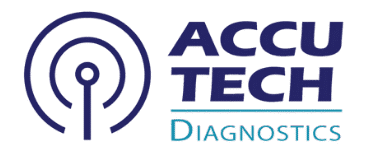Prenatal Diagnosis
"Prenatal Diagnosis" refers to the testing performed during pregnancy to assess the health status of the fetus and detect potential genetic disorders, chromosomal abnormalities, or other developmental problems. The goal is to provide expectant parents with information that can help them make informed decisions about their pregnancy and prepare for the birth of a child with a specific condition.
Why is Prenatal Diagnosis Performed?
Prenatal diagnosis is typically offered when there is an increased risk of a fetal abnormality, often identified through:
Abnormal Prenatal Screening Results
Such as an elevated risk from first-trimester screening (nuchal translucency, PAPP-A, hCG) or second-trimester quad screen, or a positive Non-Invasive Prenatal Testing (NIPT) result.
Advanced Maternal Age
Increased risk of chromosomal abnormalities (e.g., Down syndrome).
Family History of a Genetic Disorder
If parents are known carriers of a recessive genetic disorder (identified through carrier screening) or have a family history of a dominant or X-linked disorder.

Previous Child with a Genetic Disorder or Chromosomal Abnormality.
Abnormalities Detected on Ultrasound
Such as structural anomalies (e.g., heart defects, neural tube defects).
Key Methods of Prenatal Diagnosis
Prenatal diagnostic tests are generally invasive, meaning they involve collecting a sample directly from the fetus or placenta.
Chorionic Villus Sampling (CVS
- When: Typically performed between 10 and 13 weeks of pregnancy.
- Method: A small sample of tissue (chorionic villi) is taken from the placenta. This can be done transabdominally (through the abdomen) or transcervically (through the cervix), guided by ultrasound.
- What it detects: Chromosomal abnormalities (e.g., Down syndrome, Trisomy 18), and single gene disorders (if the specific gene mutation is known and tested for).
- Advantages: Can be performed earlier in pregnancy than amniocentesis.
- Risks: Small risk of miscarriage (slightly higher than amniocentesis), limb defects (if performed too early).
Amniocentesis
- When: Typically performed between 15 and 20 weeks of pregnancy (most commonly 15-18 weeks).
- Method: A small amount of amniotic fluid (which contains fetal cells) is withdrawn from the uterus using a thin needle inserted through the abdomen, guided by ultrasound.
- What it detects: Chromosomal abnormalities, neural tube defects (e.g., spina bifida via alpha-fetoprotein levels in the fluid), and single gene disorders.
- Advantages: Lower risk of miscarriage than CVS (when performed by experienced practitioners), can detect neural tube defects.
- Risks: Small risk of miscarriage, infection, leakage of amniotic fluid.
Percutaneous Umbilical Blood Sampling (PUBS) / Cordocentesis
- When: Usually performed after 18-20 weeks of pregnancy.
- Method: Fetal blood is drawn directly from the umbilical cord vein, guided by ultrasound.
- What it detects: Rapid karyotyping for chromosomal abnormalities, fetal infections, severe anemia, and other blood disorders.
- Advantages: Provides a direct fetal blood sample for rapid analysis.
- Risks: Higher risk of miscarriage, bleeding, infection compared to CVS or amniocentesis. Usually reserved for specific indications when other tests are inconclusive or rapid results are needed.
Laboratory Analysis of Samples
Once collected, the fetal cells or DNA from these samples are analyzed in the diagnostic laboratory using various genetic techniques:
Karyotyping
To visualize and count chromosomes for large-scale abnormalities.
FISH (Fluorescence In Situ Hybridization
Rapid detection of common chromosomal aneuploidies (e.g., Trisomy 21, 18, 13) and microdeletions/duplications.
Biochemical Assays
Measuring specific enzyme levels or metabolites in the amniotic fluid for certain metabolic disorders.
Chromosomal Microarray Analysis (CMA):
High-resolution detection of smaller chromosomal gains or losses (microdeletions/microduplications) across the entire genome, which may not be visible on standard karyotyping.
Molecular Genetic Testing:
PCR, DNA sequencing, or gene panels to identify specific gene mutations for known inherited disorders.
Important Considerations
Prenatal diagnosis provides invaluable information to expectant parents, allowing them to make informed decisions and prepare for the future, whatever the outcome.
Risk vs. Benefit
Invasive prenatal diagnostic procedures carry a small risk of complications, so the decision to undergo them is carefully weighed against the perceived risk of a fetal abnormality.
Timing
The timing of the test influences the type of information obtained and the options available to parents.
Genetic Counseling
Essential before and after prenatal diagnosis to help parents understand the risks, results, and implications, and to explore their reproductive options.
Non-Invasive Prenatal Testing (NIPT):
While NIPT (which analyzes cell-free fetal DNA in maternal blood) is a highly accurate screening test for common chromosomal abnormalities, it is not a diagnostic test. A positive NIPT result still requires confirmation by an invasive diagnostic procedure (CVS or amniocentesis).

